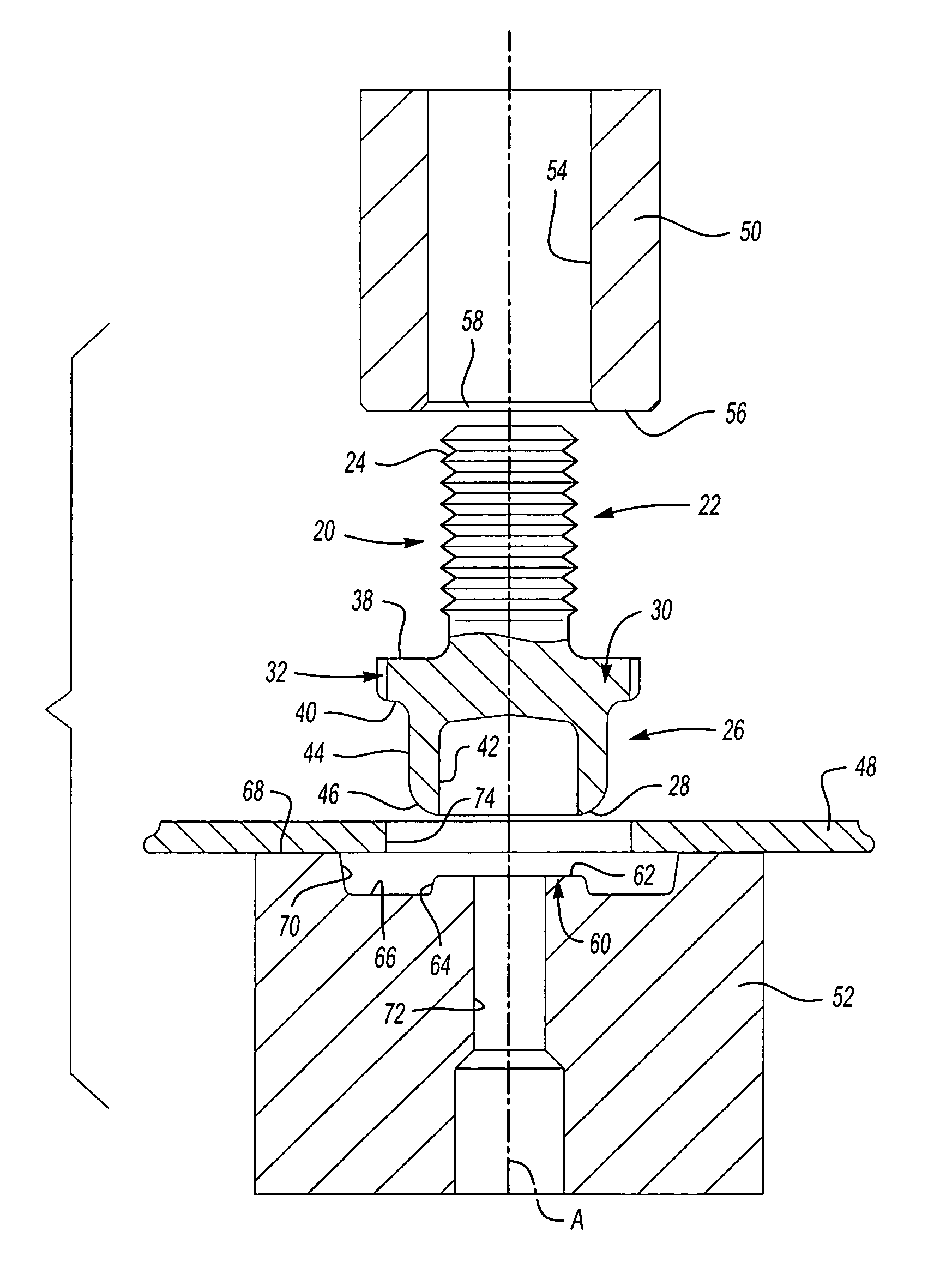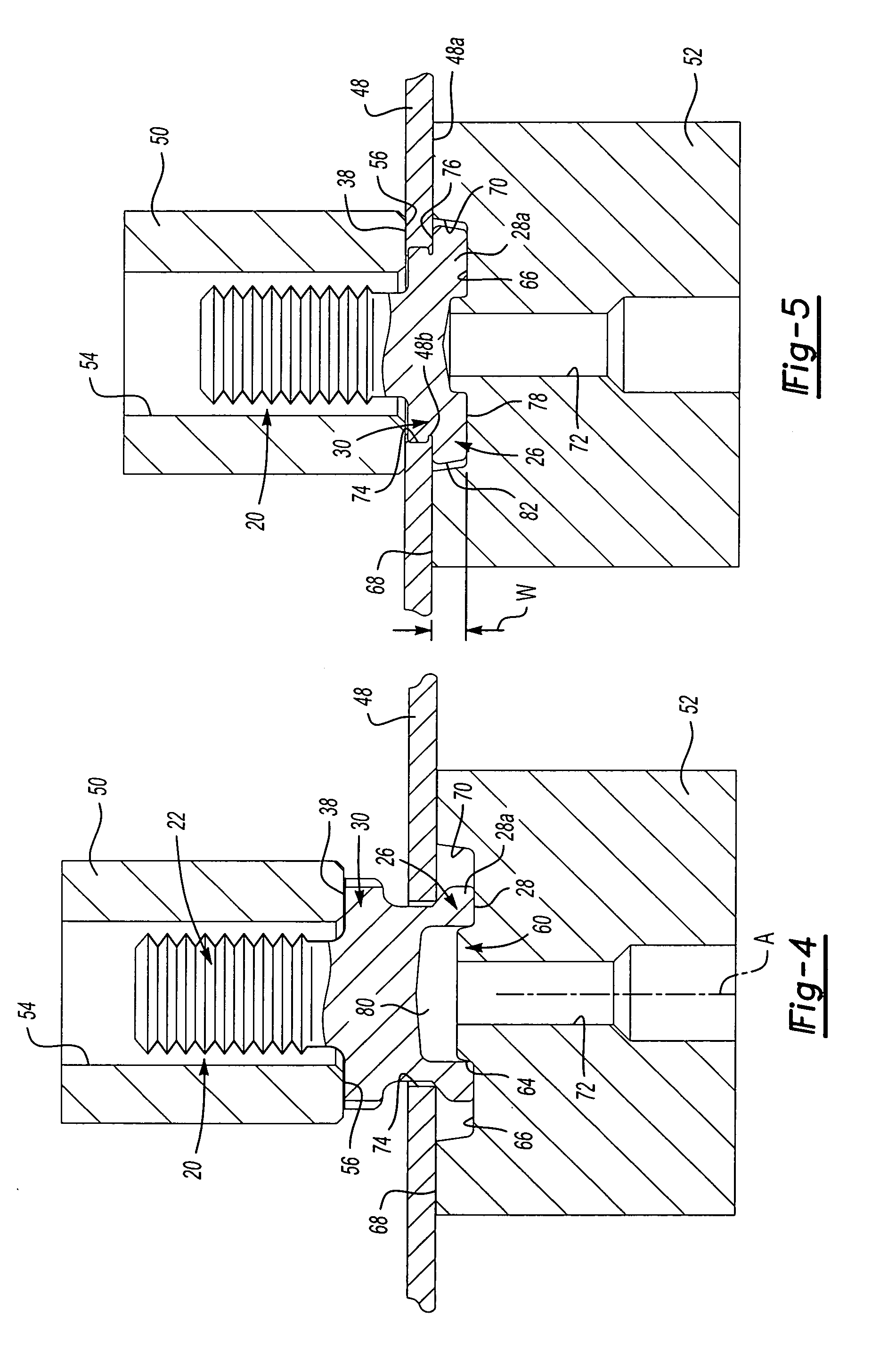Self-attaching fastener and panel assembly, method of installation and die member
a fastener and panel technology, applied in the direction of threaded fasteners, screwing, manufacturing tools, etc., can solve the problems of increasing the cost, the tubular barrel portion is subject to cracking, and the integrity of the fastener and panel assembly is not sufficient for commercial applications, so as to achieve less damage or wear, less expensive, and easy to form
- Summary
- Abstract
- Description
- Claims
- Application Information
AI Technical Summary
Benefits of technology
Problems solved by technology
Method used
Image
Examples
Embodiment Construction
[0024] As set forth above, and discussed further hereinbelow, the embodiments of the self-attaching fastener and panel assembly, method of installing a self-attaching fastener in a panel and die member of this invention are disclosed for illustrative purposes only and do not limit this invention except as set forth in the appended claims. FIGS. 1 and 2 illustrate one preferred embodiment of a male self-attaching fastener which may be utilized in forming a self-attaching fastener and panel assembly of this invention utilizing the method of installation of this invention. As also set forth above, one advantage of the method of installation and die member of this invention is that a “conventional” self-attaching fastener may be utilized to form the self-attaching fastener and panel assembly of this invention. The embodiment of the self-attaching fastener shown in FIGS. 1 and 2 may be substantially identical to the embodiment of the self-attaching fastener shown in co-pending U.S. paten...
PUM
| Property | Measurement | Unit |
|---|---|---|
| diameter | aaaaa | aaaaa |
| thickness | aaaaa | aaaaa |
| inner diameter | aaaaa | aaaaa |
Abstract
Description
Claims
Application Information
 Login to View More
Login to View More - R&D
- Intellectual Property
- Life Sciences
- Materials
- Tech Scout
- Unparalleled Data Quality
- Higher Quality Content
- 60% Fewer Hallucinations
Browse by: Latest US Patents, China's latest patents, Technical Efficacy Thesaurus, Application Domain, Technology Topic, Popular Technical Reports.
© 2025 PatSnap. All rights reserved.Legal|Privacy policy|Modern Slavery Act Transparency Statement|Sitemap|About US| Contact US: help@patsnap.com



